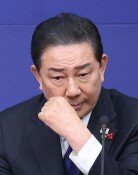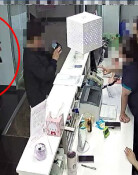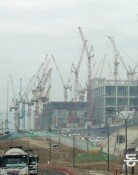‘Mecca of Booming Shipbuilding Industry’ Geojedo
‘Mecca of Booming Shipbuilding Industry’ Geojedo
Posted June. 24, 2001 12:11,
The welding flame was shooting up in the darkness next to the 120m gigantic `Goliath` crane, which had been a symbol of the conflict between labor and capital, at the Daewoo Okpo Shipbuilding yard at 2:00 am on 24th.
``We have not refused even the night duties and the extra duties in order to keep the appointed date of delivery of the ordered ships. The assembly plant has been operating incessantly for 7 days and 24 hours a day by rotation.``
The voice of Lee Jung-Yong, the engineer of the first ship assembly department, was full of vigor.
The large oil supertanker with 332m length and 31m height, which is bigger than the Jamsil Soccer Stadium, was in the finishing stage in the third dock of the Samsung Geoje Shipbuilding yard. The Geoje Shipbuilding yard of the Samsung Heavy Industries (SHI) is located in Shinhyun-Up, Jangpyong-Ri, 15 minutes away from the Okpo Daewoo Shipyard by drive. The works are completed by assembling in the docks, which were made from the welded pieces of steel in each process. Since there is little space to mound up the blocks to be assembled in the yard, even the foot-volley ball courts were being used as open-air storages.
Son Byung-Bok, the executive director of the Samsung Heavy Industries, revealed the happy dilemma, as he said that ``we had received the orders of $3.6 billion last year, but the aim of the receiving orders lowered to $2.8 billion this year. We could not but reduce the orders not because there was not enough orders received, but because we established the plan to selectively receive orders which are highly profitable``.
The Korean shipbuilding industry has enjoyed the greatest boom in history for the past three years. Most shipyards already secured the amounts of work to be done for the next three years. The amount of orders received such as the `Very Large Crude Carriers` (VLCC), the Liquefied Natural Gas (LNG) tankers, and the Container Ship, can be broken down as follows; the Hyundai Heavy Industries (5.47 million GT), the Samsung Heavy Industries (4.59 million GT), the Daewoo Shipbuilding & Marine Engineering (DSME, 4.08 million GT). The domestic ranking of these three companies can be applied to the world`s ranking as such.
Kim Chul-Nyun, the executive director charged in the technology of the SHI, told that ``the competitiveness of the Korean shipbuilding companies bases on the facilities and the technologies, not on the low wages. The Korean shipbuilding industry will lead the world`s market for the next 10 years``. That is, the Japanese companies were already fell behind in the facilities and the technologies, and the newly invested Chinese companies should consume more than 10 years in order to catch up the Korean companies.
The Geojedo is solidifying its position as the Mecca of the world shipbuilding industry.
The populations of 170,000 currently live in the island where the world`s second and third shipbuilding companies are located. The money which are paid to 25,000 workers of the SHI, the DSME and their affiliates amount to 100 billion won a month and 1 trillion 200 billion won a year.
Thanks to the booming shipbuilding industry, Geojedo is the area in which there is no slump. Park Sang-Baik, the president of the Wonwoo Engineering Co. which is one of the Daewoo`s affiliates, told that ``we should recruit 10 workers, but it is hard to find the workers in Geojedo. Lee Dong-Chul, a worker of the Daewoo, told that ``at the end of the month, it is usually difficult to hold a room of the `Danranjujeom` even in the early evening``.
As the increasing number of the supplying companies can not move into the industrial complex, the Kyeryong Mountain were torn up in different places for the plant sites.
Kim Jae-Ik, the director of the construction and urban bureau of Geoje city, told that ``the affiliates outside the industrial complex have become the cause of the chaotic development. We requested the financial support to the central government, but did not receive the reply``.
The biggest problem in the Geoje shipyards is not the competition with the foreign companies, but the unstable relationship between management and labor. The manifestos of the labor union appealing `all-out struggles` were pasted up on the walls of the Okpo shipyard, and the prompt reports on the struggles were flying even in the drizzling rain on 23rd. The wage negotiations were held seven times, but they have not produced any positive result.
Lee Sang, the executive director of the DSME, said that ``the executives of the labor union had a rally with the Korean Federation of Trade Union a couple of days ago. Fortunately, there have been no big trouble for the past 10 years, but we have been working under a strain``.
kkh@donga.com




![[천광암 칼럼]‘내란’과 김건희 비리… 흑역사로 막 내린 ‘용산파천’](https://dimg.donga.com/c/138/175/90/1/wps/NEWS/IMAGE/2025/12/28/133051629.1.jpg)


